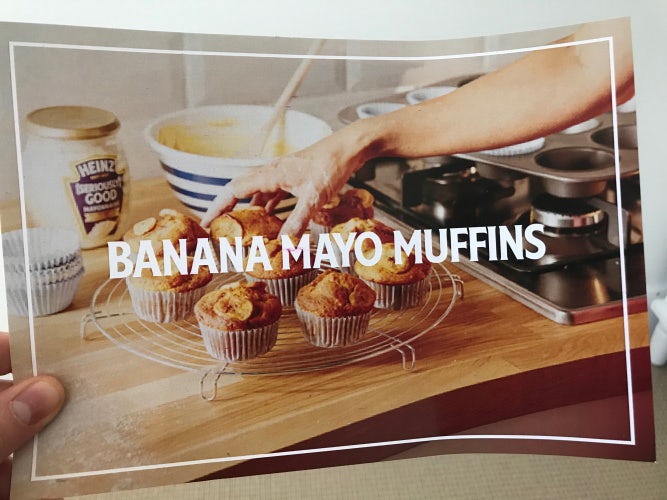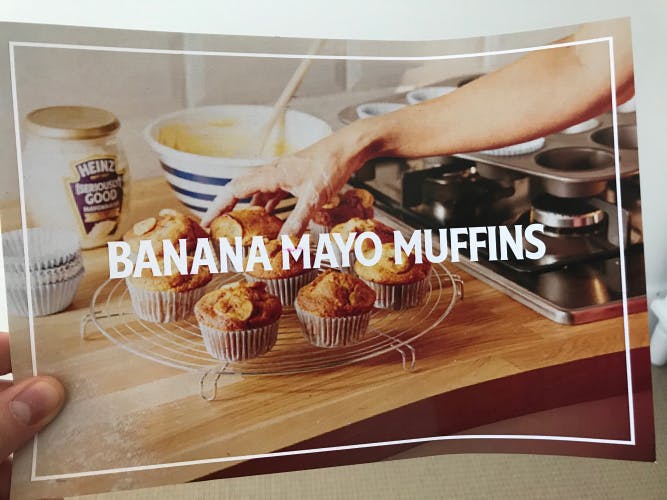Coronavirus has resulted in a shift in shopping behaviour, with many more consumers now heading online for groceries, as well as bulk-buying food and household items.
As a result of this, it’s been predicted that ecommerce will continue to grow for this sector even after Covid-19 subsides, which in turn could mean new digital opportunities for FMCG brands.
One such opportunity could be direct-to-consumer, with some brands seeing a boost in DTC sales since the coronavirus hit, and others now investing in the channel.
Indeed, some of the biggest FMCG companies already operate direct to consumer. Last year, to give just one example, saw Nestle launch a DTC website for its KitKat Chocolatory, allowing consumers to purchase luxury versions of the confectionary directly from a bespoke website. Nespresso is another FMCG brand that has found huge success with the channel, selling its coffee capsules on a branded website as well as through its partnership with Amazon, and of course through its brick and mortar stores.
But for new FMCG brands, or those entering into DTC on the back of coronavirus – is it a smart move? Or, will consumer interest in buying certain products direct die down when things return to normal? Here’s a look at four current challenges facing FMCG brands going direct to consumer.
Managing distribution
The direct-to-consumer channel can work for FMCG brands if they offer a unique product offering – which consumers might not be able to find easily when out shopping – or where consumers want a subscription or continuous supply of a product, which direct-to-consumer websites also facilitate.
Huel is arguably a good example of both; the meal alternative brand reportedly sold 2.7m meals in January 2019 on its ecommerce platform, with consumers signing up for the convenience of getting a range of Huel items delivered.
Always be prepared. When Friday starts to drag and you open your bag to see this. ????
These Huel Bars coming at you in Salted Caramel, Chocolate, Coffee Caramel and Chocolate Orange flavour, which one are you going for? ????https://t.co/9ImKiqSR0g#Huel pic.twitter.com/T9Nho9ZELQ
— Huel (@gethuel) February 7, 2020
In recent weeks, we’ve seen other FMCG companies go direct-to-consumer, with some doing so in response to coronavirus and its impact on consumers.
Heinz has launched Heinz to Home; a website that allows customers to order Heinz product bundles, including an ‘Essentials’ box of Heinz beans, soups, and hoops. The aim is to help people who are currently less able to shop to buy Heinz products, particularly frontline workers. Delivery is free for those who work for the NHS, emergency services, armed forces, and police.
By popular demand, we have just released a bundle of your favourite sauces to our new online shop, Heinz to Home. Now with delivery to Northern Ireland, your order will be with you in 2-3 working days: https://t.co/SGjC2wurtx pic.twitter.com/hjcMX9ICWW
— Heinz (@HeinzUK) April 24, 2020
Interestingly, Heinz has come in for some criticism regarding the move. A senior wholesaler told the Grocer that Heinz has been struggling to supply its normal routes to market. Moreover, “to cut out your customers with pricing that appears cheaper than they can buy at, does not feel at all collaborative.” This could potentially be true, but Heinz has insisted that it is still managing to maintain supply for wholesalers and retailers.
Whether or not Heinz is succeeding, it is certainly the case that managing all aspects of the supply chain can be a challenge, even for big manufacturers. The main reason for this is that existing warehouses are typically set up for supplying high volumes of products into supermarkets and other third party retailers, which means selling DTC (i.e. supplying single-pick items) requires a whole new and costly operational structure.
One alternative is to use a third party logistics provider, such as Amazon Logistics, in order to handle shipping. Another option is to outsource order fulfilment from a third-party warehouse, which is something that Love Cocoa, a chocolate company founded by James Cadbury, did in order to test its products on a smaller scale. According to CIPS, the decision has proved to be a factor in the brand’s success in scaling up. James Cadbury commented: “We ensure all goods and packaging are correctly barcoded at the point of manufacture prior to going to the storage warehouse. We only recently implemented this system and it has been really important in cutting out any errors.”
Sustaining customer demand post-coronavirus
Another issue for Heinz and its new DTC venture will be generating enough customer demand to justify its recent investment. It’s yet unclear whether Heinz to Home will be a short-term offering for customers in need, or part of a long-term strategy to build direct relationships.
Of course, success will also depend on other factors such as the customer experience, which includes things like price point, delivery, and UX.
In order to gain more understanding of Heinz’ offering, I recently placed an order on Heinz to Home. I ordered the ‘Sauce Bundle’ priced at £10, plus £3.50 for home delivery. According to my calculations, it would have cost me £11.40 to buy the items separately from a supermarket. However, this is based on these items being in stock and sold at the current lowest price (which I determined from the price comparison website Price Runner). For frontline workers who are eligible for free delivery, buying the bundle through Heinz would work out cheaper.
Overall, I found the Heinz to Home experience positive. The website is clear and appealing in design, with an easy and fast checkout. Delivery was also very good; the package arrive two days after I placed the order. A recipe card was also included, which is something that Heinz could focus on more in future to increase value for consumers.

Heinz to Home sauce bundle recipe card. Photo: author
Convenience aside, the main question I’m left with is whether there will be demand for these products (which come in bundles of 10 items and up) once the coronavirus pandemic is over. It’s certainly a possibility, however, it’s perhaps still likely that customers will continue bulk-buying from other wholesalers such as Costco, or simply buy on a weekly basis from their chosen supermarket. One category which could see more demand is the recently-added ‘Baby Bundle’, which includes 20 items of baby food. For new parents, being able to order a large quantity of food in one go could prove to be particularly convenient.
Competition & conflict from retail partners
Alongside demand, another big challenge for FMCG brands selling direct is combatting ingrained customer behaviour, which typically centres around shopping from grocery stores and supermarkets (both online and in-store).
While coronavirus has resulted in supermarkets being stretched (and customers looking for online alternatives as a result), it’s unknown this behaviour will continue after supply chains and operations return to normal. For PepsiCo, which has just launched two new websites for some of its biggest FMCG brands, managing partner relationships (and sustaining consumer interest) is likely to remain a big challenge.
The newly launched PantryShop.com sells a range of ‘pantry kits’ which are listed under specific categories such as ‘rise and shine’ and ‘workout and recovery’, and which include brands like Tropicana and Quaker. Meanwhile, Snacks.com sells Frito-Lay products (such as Lays and Chitos) in customer curated ‘snack packs’.
Michael Lindsey, Chief Transformation & Strategy Officer for Frit-Lay North America, said in a statement: “We’ve seen incredibly strong demand for our snacks during this time, and Snacks.com offers consumers another way to purchase the products they love, delivered right to their door.” PepsiCo also stated that both websites were “developed from concept to execution in less than 30 days”, which also indicates that it is PepsiCo’s attempt to capitalise on the rise in online grocery shopping that has occurred as a result of coronavirus.
We’ve been working around the clock to make it easier for you to stock your pantry. Today we launched two new ways to get you the products you love: https://t.co/fSIloOe2WJ and https://t.co/pWZ4n4D0pc! https://t.co/lwc51OajCx pic.twitter.com/6f47jjWYqf
— PepsiCo (@PepsiCo) May 11, 2020
As both sites only operate in the US, I was unable to place an order. However, a few things to note are that standard delivery on PantryShop is free for US customers, while it is same for Snacks.com with a $15 minimum purchase. With delivery and fulfilment a costly investment for FMCG brands, PepsiCo is already at an advantage in terms of its own capabilities. Gibu Thomas, PepsiCo’s head of e-commerce, told Progressive Grocer: “One of the benefits we have as a result of our scale is, we have a very distributed supply chain footprint, and therefore our products are manufactured pretty close to the end consumers. This allows us to deliver a majority of consumer orders in two days or less, which meets our shopper’s expectations.”
While PepsiCo has clearly accelerated its strategy on the back of coronavirus, it’s been predicted that the shift to ecommerce will continue after the pandemic dies down. Bryan Wiener, CEO of ecommerce platform Profitero, told AdWeek that the surge in ecommerce investment was “something that was going to be happening over the course of five years” rather than five weeks. As such, it is going to be vital that companies – particularly within FMCG, where competition with wholesalers and supermarkets is fierce – do not simply focus on customer acquisition, but build strategy based on long-term growth. Again, this boils down to product. PepsiCo could potentially generate more success than Heinz, as its product offering includes items that customers might feel more inclined to order separate to their weekly shop (for special occasions or as a gift for others).
Long-term value is also important. After all, many customers might be willing to buy groceries direct from brands as a one-off – particularly during the pandemic – but hooking in repeat customers will be the real challenge going forward.
Additional value through personalisation and customer service
Finally, another factor that can impact loyalty is of course customer service, which presents a new and different set of challenges for FMCG brands. This is because the direct model opens up direct lines of communication between the brand and its customers – a new concept for FMCG manufacturers that usually rely on retail partners to handle customer service interactions.
However, when selling direct, all aspects of the customer journey are in the hands of the FMCG, meaning that it’s vital brands put in place proper customer service operations to meet the needs of customers.
Further to this, FMCG brands also need to take responsibility for the overall customer experience, ensuring that it offers something of greater value than retail partners. Aside from delivery and convenience, this could be a level of personalisation or customisation, as well as relevant and timely communication to ensure that customers continue to engage after they’ve ordered. An example of this is PepsiCo’s Snacks.com, which allows customers to customise their own snack boxes from a variety of different branded products.
Since my own experience with Heinz to Home, however, I have yet to receive any form of follow-up marketing from the brand, which certainly seems like a missed opportunity to try and continue the relationship. While the online experience itself was positive, it’s hard to pin-point anything in particular that might nudge me into re-ordering. For FMCG brands facing increasingly stiff competition from online supermarkets, this is something to bear in mind.
For more on consumer goods – visit our FMCG sector hub




